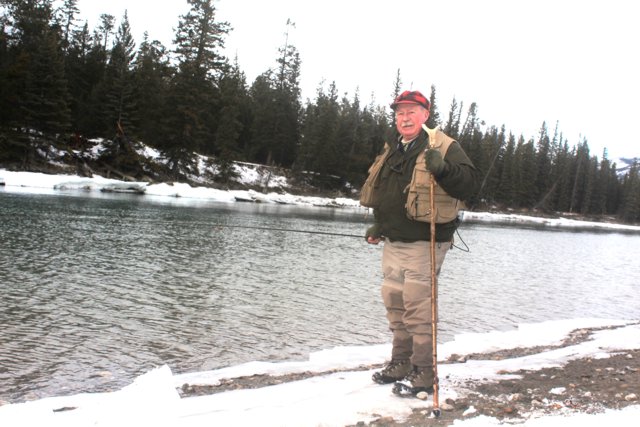Trout rivers in many situations are can be as treacherous as they are gorgeous. And moving about in them can be a traumatic affair, especially if the rocky bottom is encrusted with greasy Algae or there are many multi-sized boulders lurking below the water surface. Add to that the rush of the river and the table is set for a potential disaster. Or maybe just a cold dunking. Either way it’s an unfortunate end to what was supposed to be a fun day on the water. While the debate still swirls over felt-soled wading boots versus rubber-cleated ones, which usually must be augmented with metal studs to make them effective, there’s one thing certain about assuring safe wading. And that’s the use of a wading staff. Particularly when crossing deeper, fast-moving water or negotiating slippery rock situations.

A wading stick can add an important degree of safety.
Most of the major tackle manufacturing companies offer a staff in a collapsible format that folds up into a compact sheath and attaches to your wader belt. There are also hand-crafted wading sticks available, some so beautiful that it seems a shame getting them wet. Having your staff connected to your belt is fine for limited use during tricky stream crossings. But if you plan on using it a lot, a shoulder lanyard is an important addition to any wading stick set-up. Because it’s always safer to have three feet firmly planted on the ground. Especially if the terrain underfoot is slippery, greasy, algae-covered rocks.

